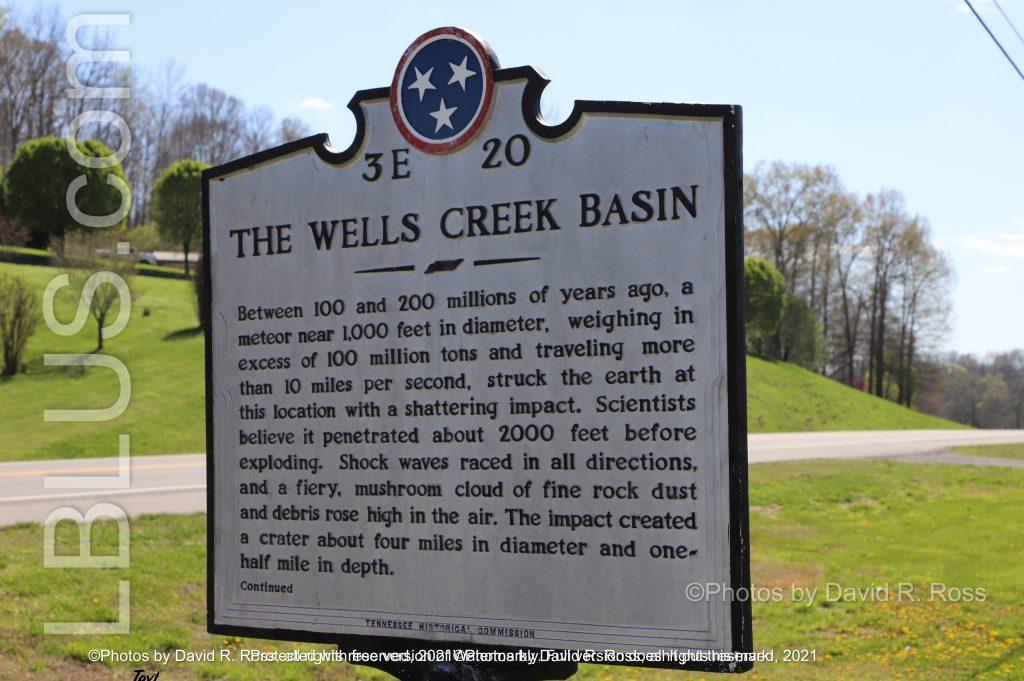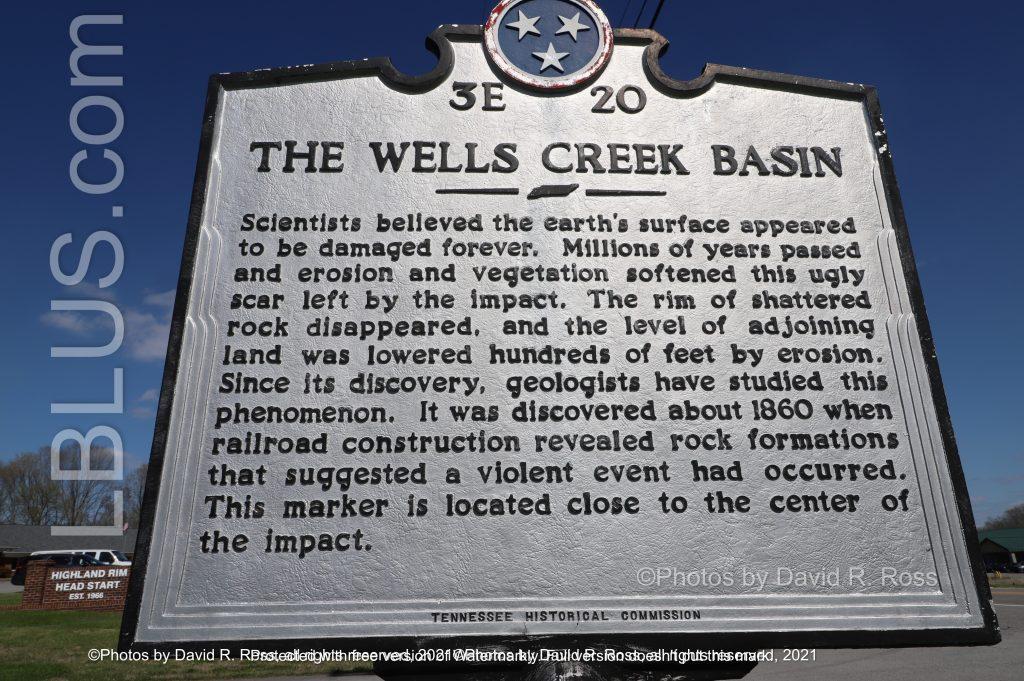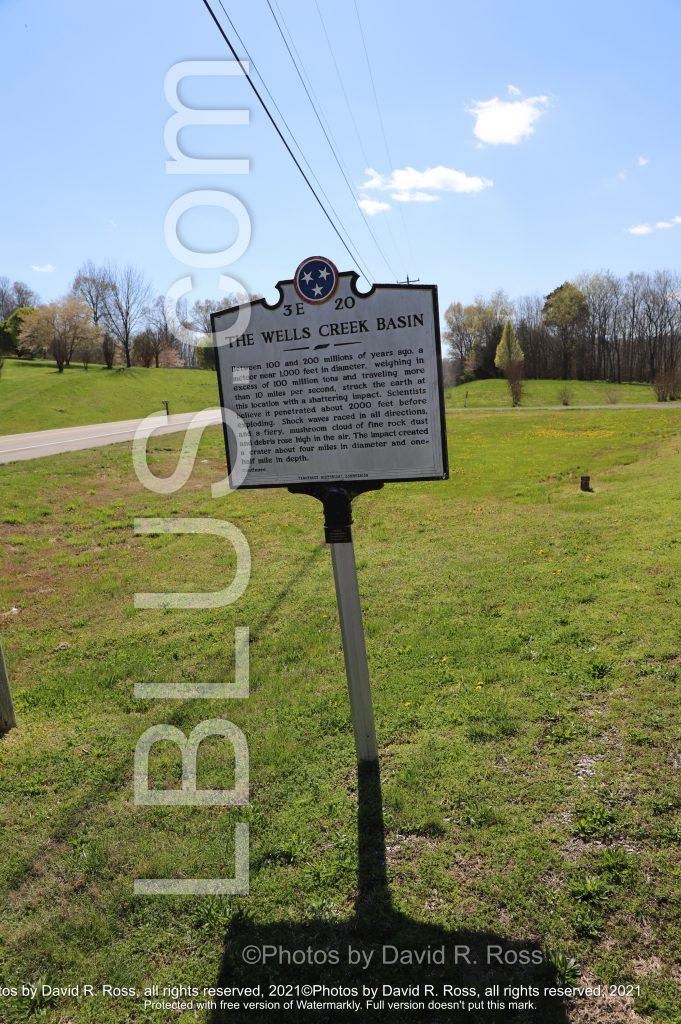“Between 100 and 200 million years ago, a meteor near 1,000 meters in diameter, weighing in excess of 100 million tons, and traveling more than ten miles per second, struck the earth at this location with a shattering impact. Scientists believe it penetrated about 2,000 feet before exploding. Shock waves raced in all directions and a fiery mushroom cloud of fine rock dust and debris rose high in the air. The impact created a crater about four miles in diameter and one half-mile in depth.” — TENNESSEE HISTORICAL COMMISSION ———— (side one of sign)


“Scientists believed the earth’s surface to be damaged forever. Millions of years passed and erosion and vegetation softened this ugly scar left by the impact. The rim of shattered rock disappeared, and the level of adjoining land was lowered hundreds of feet by erosion. Since its discovery, geologists have studied this phenomenon. It was discovered about 1860 when railroad construction revealed rock formations that suggested a violent event had occurred. This marker is located close to the center of the impact.” — TENNESSEE HISTORICAL COMMISSION —– (side two of sign.)



“Between 100 and 200 million years ago, a meteor near 1,000 meters in diameter, weighing in excess of 100 million tons, and traveling more than ten miles per second, struck the earth at this location with a shattering impact. Scientists believe it penetrated about 2,000 feet before exploding. Shock waves raced in all directions and a fiery mushroom cloud of fine rock dust and debris rose high in the air. The impact created a crater about four miles in diameter and one half-mile in depth.” — TENNESSEE HISTORICAL COMMISSION ———— (side one of sign)
https://impactcraters.us/wells_creek_tennessee
“Scientists believed the earth’s surface to be damaged forever. Millions of years passed and erosion and vegetation softened this ugly scar left by the impact. The rim of shattered rock disappeared, and the level of adjoining land was lowered hundreds of feet by erosion. Since its discovery, geologists have studied this phenomenon. It was discovered about 1860 when railroad construction revealed rock formations that suggested a violent event had occurred. This marker is located close to the center of the impact.” — TENNESSEE HISTORICAL COMMISSION —– (side two of sign.)